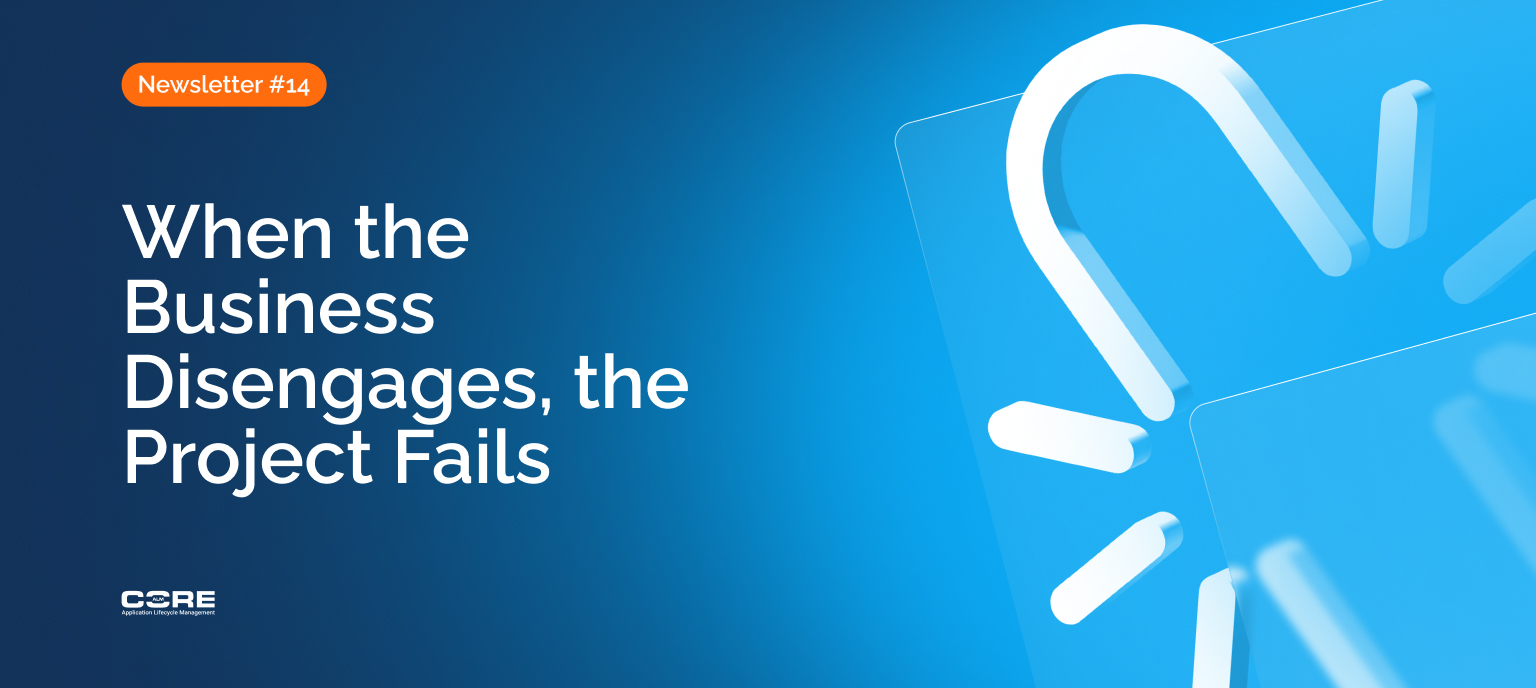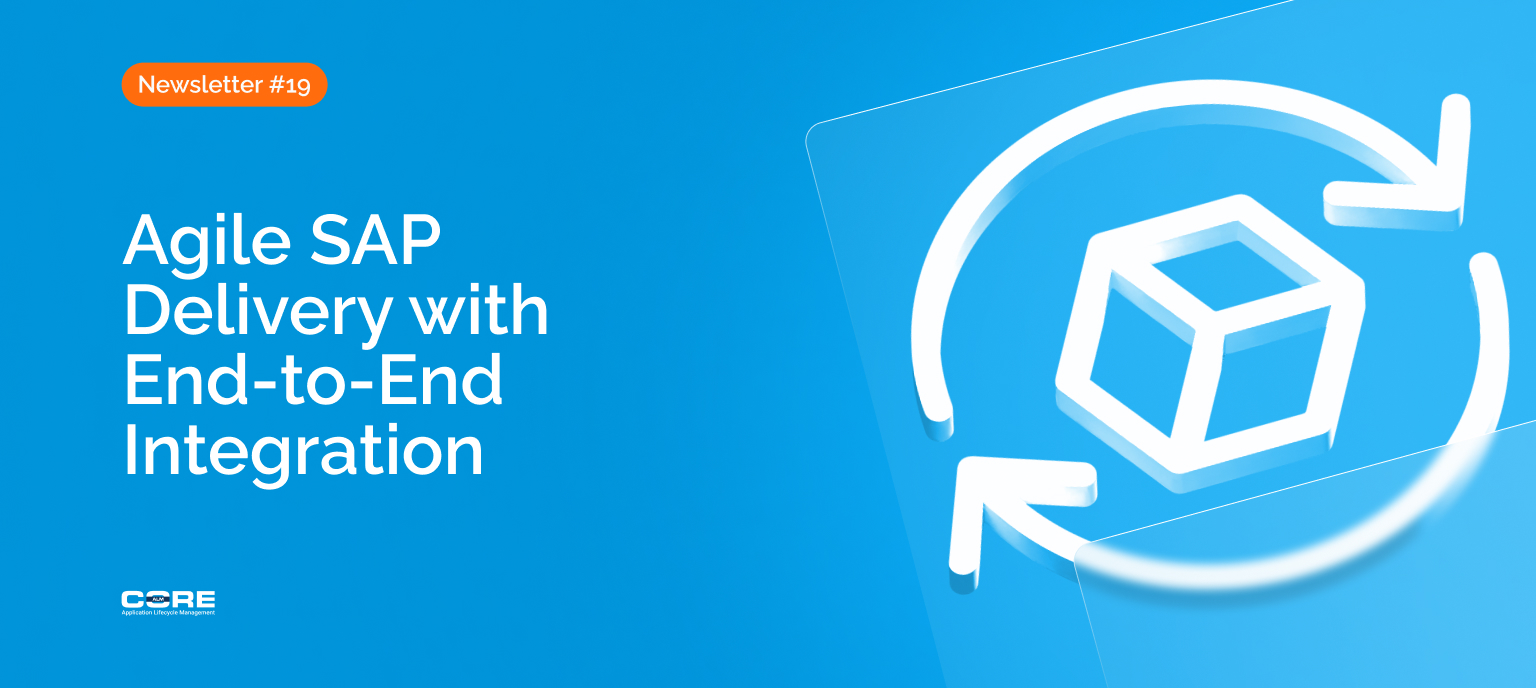Introduction
If the end-to-end picture isn’t owned early, delivery drifts and rework grows.
It’s rarely a lack of effort that derails projects—it’s the absence of a clear end-to-end picture, leading to costly delays and rework. In many SAP programs, business leaders remain engaged after design but are quickly pulled into resolving specific issues. The pace of delivery often keeps them in a reactive mode—responding to configuration questions or handling exceptions—rather than evaluating and shaping the full end-to-end process flow. Yet it is the business that must lead the definition of the end-to-end process scenarios that will be used to validate the system. These scenarios are more than a testing artifact—they act as the contract between what the business needs and what the project team must deliver. Without a clear, concise list of scenarios, final validation often overlooks cross-functional handoffs, integration points, and operational dependencies. This typically results in a system that works in parts but struggles as a whole, and a project that misses the timeline and exceeds the budget. Success depends on business leaders owning outcomes throughout the build phase by guiding the definition of end-to-end business process scenarios—well before it’s time to validate the solution.
If the end-to-end picture isn’t owned early, delivery drifts and rework grows.
Critical Challenges
Siloed build hides end-to-end gaps until fixing them is expensive.
Most project drift can be traced to a single gap: the solution is developed in silos, and end-to-end process gaps are not visible until much later in the integration testing phase. By then, fixes are costly, timelines slip, and the business is often forced to accept compromises.
- Scenarios aren’t fully defined or owned by the business. Without clear, business-authored scenarios, acceptance criteria become fragmented across disconnected process steps. This often produces a solution that passes early testing but fails to deliver the operational performance the business expects.
- Validation happens too late in the lifecycle. Defining business process test scenarios drives collaboration across workstreams and forces deeper cross-functional analysis—essentially testing the design in parallel with the build activities. Walking business users through these scenarios early in the build cycle, immediately after baseline configuration, allows them to identify process gaps well before customizations are complete.
- Business requirements aren’t mapped to test cases. Business process test scenarios should cover most process areas. Linking requirements to test cases and embedding those cases into longer end-to-end scenarios creates traceability. This gives the business clear visibility into coverage and gaps, and when defects occur, makes the business impact immediately clear. The solution is sustained, business-led ownership of end-to-end process scenarios—guiding design decisions, shaping testing, and validating the solution as a complete, integrated system rather than a collection of parts.
Siloed build hides end-to-end gaps until fixing them is expensive.
From Ownership to Traceability
Unify the work in one place and connect SAP with purpose-built integrations.
Unify on a single system of work so everyone plans, approves, and tracks in one place—while utilizing time-saving SAP capabilities behind the scenes.
-
- One workspace, shared language. Anchor on clear, business-owned requirements with acceptance criteria in your project tool (e.g., Jira or Azure DevOps). Make this the single source of truth for all cross-application work.
- Map test cases to requirements. Link all test cases to their related requirements or user stories. Reuse SAP Best Practices content and use SAP Cloud ALM test orchestration for real-time execution or automation where applicable.
- Attach change to the requirement. Link configurations, extensions, and SAP transports to the same requirement/story in Jira or Azure DevOps so you can see what moved alongside test and defect status. Control SAP approvals and deployment via CoreALM transport integrations for Jira, Azure DevOps, or ServiceNow.
- Stay synchronized front-to-back. Keep requirements, tests, and defects in lockstep using CoreALM’s SAP Cloud ALM connectors for Jira or Azure DevOps (if ITSM is in play, see the ServiceNow Connector for SAP Cloud ALM for incident/change alignment).
- Run delivery from a common board. Drive integration standups from Jira or Azure DevOps boards and report SAP and non-SAP status from a shared dashboard. This unification approach—one workspace up front with purpose-built SAP integrations under the hood—delivers clear visibility, faster decisions, and audit-ready traceability without adding complexity.
Unify the work in one place and connect SAP with purpose-built integrations.
Conclusion
Make requirements and tests the single thread from intent to release
Projects don’t slip because teams stop working; they slip when the solution is built in silos and only validated late. The fix is straightforward: make business-owned requirements and their tests the single thread from intent to release so the system is validated as a whole, not as a set of parts. Clean core, side-by-side extensions, and faster market cycles have raised the bar; by integrating your project tools directly with SAP, you can unify teams without compromising control.
Three actions to take this week:
- Make requirements the anchor. Ensure every in-scope requirement has clear acceptance criteria, a named business owner, and links to its tests and change items in Jira or Azure DevOps. Expected outcome: one source of truth the business can steer.
- Turn on synchronization. Keep requirements, tests, and defects in lockstep between your project tool and SAP Cloud ALM using CoreALM connectors (Jira or Azure DevOps). Expected outcome: the same facts in both places, consistent cross-application status, and fewer surprises.
- Run a weekly readiness review. Approve SAP changes directly from your project tool using CoreALM transport integrations (Jira, Azure DevOps, or ServiceNow). Expected outcome: faster, better coordinated deployments with a clean audit trail.
As your requirement-centric data unifies, you will have opportunities to leverage AI to draft acceptance criteria, suggest missing tests, flag risky changes based on patterns, and pre-score release readiness. Teams that align on one workspace and keep requirements connected to tests and change will be first to benefit from AI-assisted planning, validation, and cutover. Put the business back in the driver’s seat with a single, requirement-centric way of working—unified up front and integrated for SAP behind the scenes—and you’ll deliver the right outcomes with fewer surprises, on a timeline you can trust.




